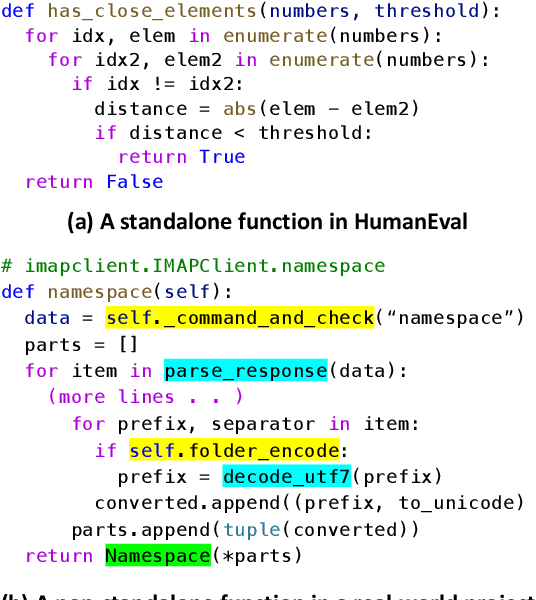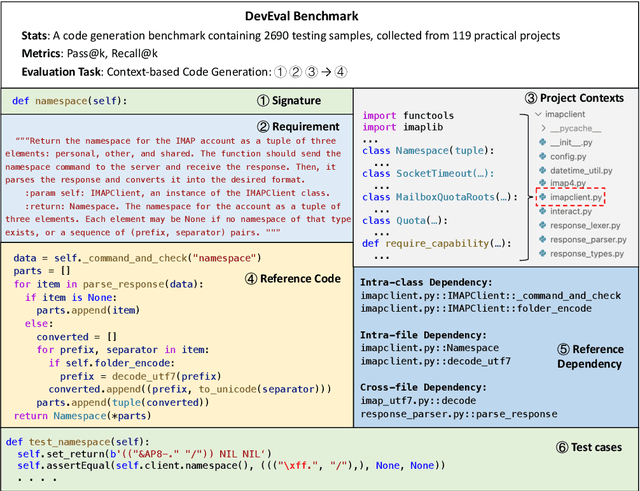Yunfei Zhao
refer to the report for detailed contributions
Hunyuan3D 2.1: From Images to High-Fidelity 3D Assets with Production-Ready PBR Material
Jun 18, 2025Abstract:3D AI-generated content (AIGC) is a passionate field that has significantly accelerated the creation of 3D models in gaming, film, and design. Despite the development of several groundbreaking models that have revolutionized 3D generation, the field remains largely accessible only to researchers, developers, and designers due to the complexities involved in collecting, processing, and training 3D models. To address these challenges, we introduce Hunyuan3D 2.1 as a case study in this tutorial. This tutorial offers a comprehensive, step-by-step guide on processing 3D data, training a 3D generative model, and evaluating its performance using Hunyuan3D 2.1, an advanced system for producing high-resolution, textured 3D assets. The system comprises two core components: the Hunyuan3D-DiT for shape generation and the Hunyuan3D-Paint for texture synthesis. We will explore the entire workflow, including data preparation, model architecture, training strategies, evaluation metrics, and deployment. By the conclusion of this tutorial, you will have the knowledge to finetune or develop a robust 3D generative model suitable for applications in gaming, virtual reality, and industrial design.
Unleashing Vecset Diffusion Model for Fast Shape Generation
Mar 20, 2025Abstract:3D shape generation has greatly flourished through the development of so-called "native" 3D diffusion, particularly through the Vecset Diffusion Model (VDM). While recent advancements have shown promising results in generating high-resolution 3D shapes, VDM still struggles with high-speed generation. Challenges exist because of difficulties not only in accelerating diffusion sampling but also VAE decoding in VDM, areas under-explored in previous works. To address these challenges, we present FlashVDM, a systematic framework for accelerating both VAE and DiT in VDM. For DiT, FlashVDM enables flexible diffusion sampling with as few as 5 inference steps and comparable quality, which is made possible by stabilizing consistency distillation with our newly introduced Progressive Flow Distillation. For VAE, we introduce a lightning vecset decoder equipped with Adaptive KV Selection, Hierarchical Volume Decoding, and Efficient Network Design. By exploiting the locality of the vecset and the sparsity of shape surface in the volume, our decoder drastically lowers FLOPs, minimizing the overall decoding overhead. We apply FlashVDM to Hunyuan3D-2 to obtain Hunyuan3D-2 Turbo. Through systematic evaluation, we show that our model significantly outperforms existing fast 3D generation methods, achieving comparable performance to the state-of-the-art while reducing inference time by over 45x for reconstruction and 32x for generation. Code and models are available at https://github.com/Tencent/FlashVDM.
Hunyuan3D 2.0: Scaling Diffusion Models for High Resolution Textured 3D Assets Generation
Jan 21, 2025



Abstract:We present Hunyuan3D 2.0, an advanced large-scale 3D synthesis system for generating high-resolution textured 3D assets. This system includes two foundation components: a large-scale shape generation model -- Hunyuan3D-DiT, and a large-scale texture synthesis model -- Hunyuan3D-Paint. The shape generative model, built on a scalable flow-based diffusion transformer, aims to create geometry that properly aligns with a given condition image, laying a solid foundation for downstream applications. The texture synthesis model, benefiting from strong geometric and diffusion priors, produces high-resolution and vibrant texture maps for either generated or hand-crafted meshes. Furthermore, we build Hunyuan3D-Studio -- a versatile, user-friendly production platform that simplifies the re-creation process of 3D assets. It allows both professional and amateur users to manipulate or even animate their meshes efficiently. We systematically evaluate our models, showing that Hunyuan3D 2.0 outperforms previous state-of-the-art models, including the open-source models and closed-source models in geometry details, condition alignment, texture quality, and etc. Hunyuan3D 2.0 is publicly released in order to fill the gaps in the open-source 3D community for large-scale foundation generative models. The code and pre-trained weights of our models are available at: https://github.com/Tencent/Hunyuan3D-2
DevEval: A Manually-Annotated Code Generation Benchmark Aligned with Real-World Code Repositories
May 30, 2024Abstract:How to evaluate the coding abilities of Large Language Models (LLMs) remains an open question. We find that existing benchmarks are poorly aligned with real-world code repositories and are insufficient to evaluate the coding abilities of LLMs. To address the knowledge gap, we propose a new benchmark named DevEval, which has three advances. (1) DevEval aligns with real-world repositories in multiple dimensions, e.g., code distributions and dependency distributions. (2) DevEval is annotated by 13 developers and contains comprehensive annotations (e.g., requirements, original repositories, reference code, and reference dependencies). (3) DevEval comprises 1,874 testing samples from 117 repositories, covering 10 popular domains (e.g., Internet, Database). Based on DevEval, we propose repository-level code generation and evaluate 8 popular LLMs on DevEval (e.g., gpt-4, gpt-3.5, StarCoder 2, DeepSeek Coder, CodeLLaMa). Our experiments reveal these LLMs' coding abilities in real-world code repositories. For example, in our experiments, the highest Pass@1 of gpt-4-turbo is only 53.04%. We also analyze LLMs' failed cases and summarize their shortcomings. We hope DevEval can facilitate the development of LLMs in real code repositories. DevEval, prompts, and LLMs' predictions have been released.
DevEval: Evaluating Code Generation in Practical Software Projects
Jan 26, 2024



Abstract:How to evaluate Large Language Models (LLMs) in code generation is an open question. Many benchmarks have been proposed but are inconsistent with practical software projects, e.g., unreal program distributions, insufficient dependencies, and small-scale project contexts. Thus, the capabilities of LLMs in practical projects are still unclear. In this paper, we propose a new benchmark named DevEval, aligned with Developers' experiences in practical projects. DevEval is collected through a rigorous pipeline, containing 2,690 samples from 119 practical projects and covering 10 domains. Compared to previous benchmarks, DevEval aligns to practical projects in multiple dimensions, e.g., real program distributions, sufficient dependencies, and enough-scale project contexts. We assess five popular LLMs on DevEval (e.g., gpt-4, gpt-3.5-turbo, CodeLLaMa, and StarCoder) and reveal their actual abilities in code generation. For instance, the highest Pass@1 of gpt-3.5-turbo only is 42 in our experiments. We also discuss the challenges and future directions of code generation in practical projects. We open-source DevEval and hope it can facilitate the development of code generation in practical projects.
Towards Enhancing In-Context Learning for Code Generation
Mar 31, 2023



Abstract:In-context learning (ICL) with pre-trained language models (PTLMs) has shown great success in code generation. ICL does not require training. PTLMs take as the input a prompt consisting of a few requirement-code examples and a new requirement, and output a new program. However, existing studies simply reuse ICL techniques for natural language generation and ignore unique features of code generation. We refer to these studies as standard ICL. Inspired by observations of the human coding process, we propose a novel ICL approach for code generation named AceCoder. Compared to standard ICL, AceCoder has two novelties. (1) Example retrieval. It retrieves similar programs as examples and learns programming skills (e.g., algorithms, APIs) from them. (2) Guided Code Generation. It encourages PTLMs to output an intermediate preliminary (e.g., test cases, APIs) before generating programs. The preliminary can help PTLMs understand requirements and guide the next code generation. We apply AceCoder to six PTLMs (e.g., Codex) and evaluate it on three public benchmarks using the Pass@k. Results show that AceCoder can significantly improve the performance of PTLMs on code generation. (1) In terms of Pass@1, AceCoder outperforms standard ICL by up to 79.7% and fine-tuned models by up to 171%. (2) AceCoder is effective in PTLMs with different sizes (e.g., 1B to 175B) and different languages (e.g., Python, Java, and JavaScript). (3) We investigate multiple choices of the intermediate preliminary. (4) We manually evaluate generated programs in three aspects and prove the superiority of AceCoder. (5) Finally, we discuss some insights about ICL for practitioners.
 Add to Chrome
Add to Chrome Add to Firefox
Add to Firefox Add to Edge
Add to Edge